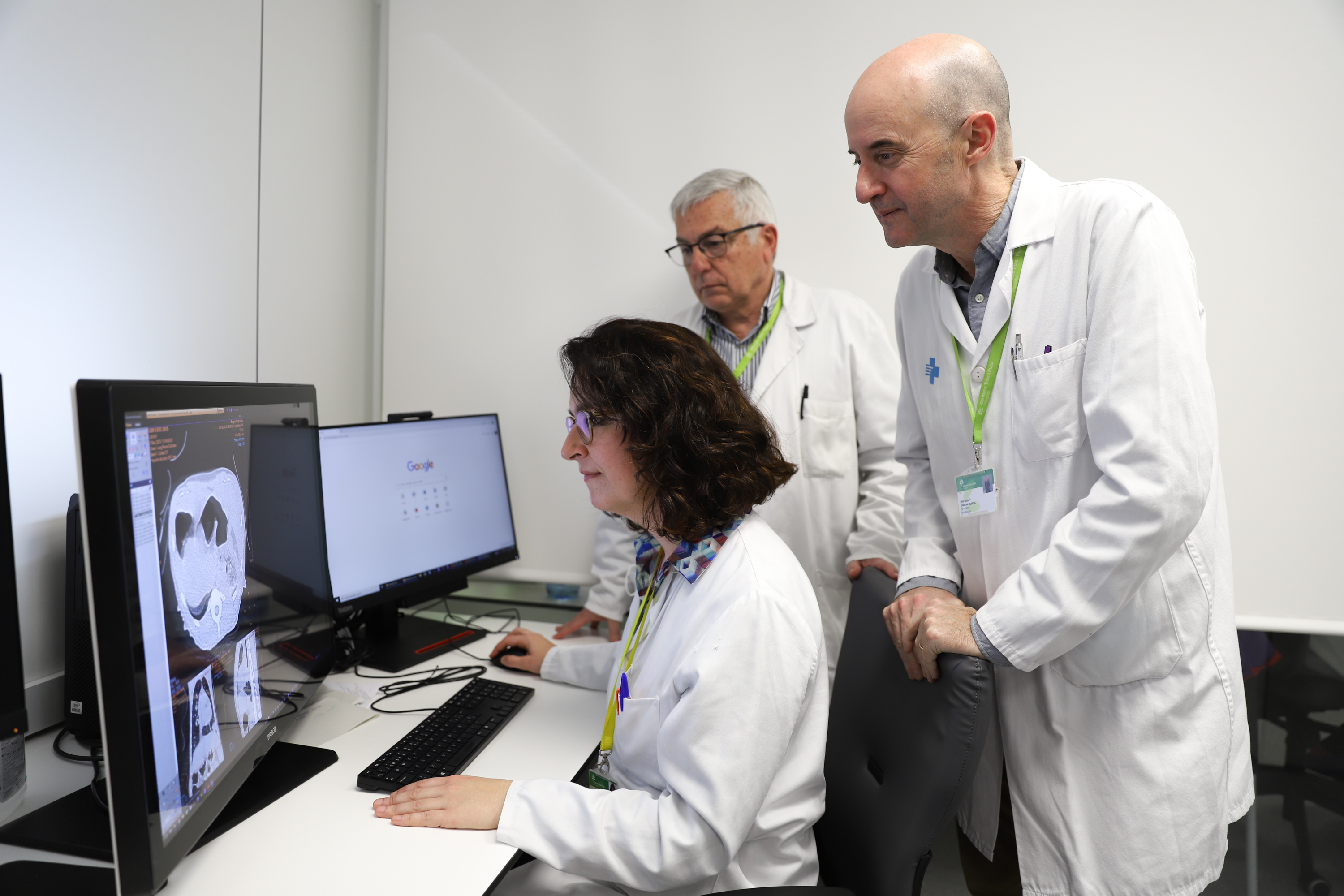Germans Trias discovers a biomarker to predict whether tuberculosis infection will lead to active disease

The discovery, published in the journal Pathogens, paves the way for accelerating the design of efficient vaccines and treatments against the disease.
One of the many unknowns within the scientific community, and one that has been around for many years, concerns the contagious disease tuberculosis. Specifically, how and why infection with the Bacillus that causes it ultimately leads a person to contract tuberculosis; in other words, why, globally, only 10% of infected people end up developing the disease.
Germans Trias has been studying the tuberculosis progression, from infection to disease, for more than 25 years. This research has just borne fruit. In an article published in the journal Pathogens, the Hospital Germans Trias Microbiology and Radiodiagnosis services describe a mechanism of action that has become a new predictive marker of tuberculosis. In the medium term, this could speed up the design of a vaccine to prevent the progression of a disease that affects 10 million people worldwide each year (some 4,000 in Spain and a thousand in Catalonia).
The research, which has had the support of the "la Caixa" Foundation, has discovered a repetive pattern in cases where the infection progresses to disease: when the Bacillus infecting the alveolar macrophage expands extracellularly, the lesion it causes grows proportionately, generating small but multiple 'daughter' lesions. "There is a tipping point, when the infection degenerates into disease, when we progress from a one-millimeter lesion to a one-centimeter lesion. This happens quickly, in a matter of 15 days, calling into question the traditional idea that tuberculosis is a disease that develops slowly", explains Pere-Joan Cardona, a specialist and researcher in Microbiology and Parasitology at the hospital and head of the Clinical and Experimental Microbiology research group at the Germans Trias i Pujol Research Institute (IGTP). For Isabel Nogueira, a researcher and radiologist at the hospital, being able to identify a central lesion surrounded by multiple lesions on a scan ”clearly marks the change from contained tuberculosis to active progressive disease."
Cardona's team had already demonstrated this behavior more than a decade ago in studies carried out with mice, which were the only ones that had tried to explain the evolution of tuberculous infection into active tuberculosis disease. However, this theory has now been verified identically in macaques, thanks to images from a Public Health England reference laboratory analyzed by Nogueira, with the support of the BIOCOM-SC group from the Universitat Politècnica de Catalunya (UPC). "The confirmation of this hypothesis contributes a novel parameter for the design of new vaccines that could avoid the generation of these daughter lesions and, consequently, prevent the disease", adds Cardona.
Tuberculosis is a disease that principally affects the lungs and can be fatal if left untreated, as well as causing sequelae in the form of pulmonary fibrosis and other respiratory disorders that impair the patient's quality of life. It can occur in an acute and more severe form in people with lowered defenses such as children, the elderly, people carrying the AIDS virus, or those with cancer or diabetes. In this sense, it is a more widespread infection than one might think. However, once detected, there is an effective treatment that lasts for about four months. The large lesions that evidence the existence of the disease are detected through chest X-rays; even so, the infection can only be definitively proven through a tuberculin test.
